#protist
Text


microscope life drawings - tardigrade and colony of Vorticella ciliates.
#animal art#microscopy#microscope#ciliate#vorticella#life drawing#sketch#tardigrade#water bear#pencil#drawing#studies#artists on tumblr#traditional art#protist#protists#microorganisms
849 notes
·
View notes
Text
Fun fact - The truth of algae
Algae are simple aquatic organisms that make their own food via photosynthesis. Their cells are very similar to plant cells - in fact, for centuries, they were classified as plants, but now they are classified as part of a different kingdom - the protista
So basically, algae are not plants, they are protists!

Seaweed (algae) under microscope - magnification X100
67 notes
·
View notes
Text
The Weird Microorganism Iceberg

I basically made this on an impulse, please don’t take it too seriously. Feel free to suggest more organisms!
Explanations under the cut.
Tardigrades: You probably all know this one. Commonly said to be polyextremophiles, but this isn’t actually true; while they can survive extreme conditions, they don’t thrive in them. Something you might not know about them is that all of their body segment genes are equivalent to arthropod head genes — meaning they are basically walking heads.
Demodex: Eyelash mites.
Diatoms: Geometric silicon shell creatures.
Nylon-eating bacteria (Paenarthrobacter ureafaciens KI72): Exactly what it says on the tin.
Myxozoa: Single-celled parasitic cnidarians. Lack digestive systems, circulatory systems, gonads, and even muscles in some species. Also may or may not be autonomous cancer cells.
Thiomargarita: The only macroscopic bacteria. Honorary microorganisms for the purposes of this image.
Wolbachia: Parasitic / mutualistic bacteria genus that has created numerous insect species through their effects on reproduction. (Infected females can become capable of parthenogenesis, while infected males are either killed, turned into females, or limited to reproducing only with females infected by the same strain.)
Deinococcus radiodurans: A bacterium which unofficially holds the title of “most extreme extremophile”. Can survive incredibly high doses of radiation, as well as high acidity and very low temperatures.
Dicyemida: Symbiotic (once mistakenly thought to be parasitic) animals that live in cephalopod kidneys. Have alternation of generations and used to be known as “Rhombozoa” (“rhombus animals”).
Facetotectans: Parasitic crustaceans with an unknown adult form. Attempts to artificially induce metamorphosis only produce another juvenile stage, as far as anyone can tell.
Metal-breathing bacteria: Bacteria which use nanowires to accept electrons from metals.
Limnognathia: One of the smallest animals, and has 15-part extensible jaws.
Disulforudis audaxviator: The only known organism to comprise a single-species ecosystem. Lives over a mile underground and feeds off the byproducts of radioactive decay.
Salinella salve: Possibly nonexistent simple animal, allegedly cultured by Johannes Frenzel in 1892 but never found by anyone else.
Warnowiids (Warnowiaceae): A family of dinoflagellates which have modified some of their organelles into an eye… which somehow works well enough for them to aim their stingers at prey, despite them having no brain (or even other cells) to process the images.
Haloquadratum walsbyi: A square that lives in salt.
Dicopomorpha echmepterygis: The smallest known insect, a parasitoid wasp smaller than a Paramecium.
Hemimastigophora: A group of organisms recently discovered to be an early-splitting branch of the eukaryotes.
Monocercomonoides: A genus of “excavate” “protists” (both terms are polyphyletic, lol) that lack mitochondria… or even the genes for them.
Parakaryon myojinensis: The only complete incertae sedis, for which not even the domain is known. Has an odd mix of eukaryote and prokaryote-like features, leading to speculation that they represent a second incidence of endosymbiosis (aka Eukaryota 2.0). Also my blog’s namesake.
Collodictyon: Considered unclassifiable for a long time. Not really that weird in and of itself, tbh.
Kamera lens: Continuing the theme, this is an alga that has proven weirdly difficult to classify despite having been known for centuries (though it’s been narrowed down to the Ochrophyta). Its funny name makes it a pain to look up.
Jeongeupia sacculi: Recently-discovered multicellular(!) bacterium. Unlike everything else on here, it doesn’t have a Wikipedia page (yet).
Meteora sporadica: “Protist” which moves by rowing with a pair of arm-like appendages. Another difficult-to-classify organism, although a study from earlier this year suggests they are related to the Hemimastigophora.
Kakabekia barghoorniana: Apparent Paleoproterozoic living fossil that looks like an umbrella.
Magosphaera planula: A sphere which splits apart into amoeba-like cells, observed by Ernst Haeckel in 1869. Also possibly nonexistent / misidentified.
75 notes
·
View notes
Note
Theoretical biology question, what would happen if an organism had all white blood cells? Assume that the white blood cells can carry oxygen somehow (or that it has another way of getting air into/out of the body, doesn't need it, etc.), but every blood cell has the capability of eating foreign bacteria. Would it have a jacked immune system like bats, or would it just be different in a new direction?
(Realizing now you meant every blood cell, but oh well, slime mold time)
A multicellular organism where every cell is an amoeba? Well, you're just describing a slime mold! A very popular choice--it's evolved multiple times (at least seven!) from various unrelated protists (the many kinds of organisms that aren't bacteria, fungi, plants, or animals). As the name suggests, a being made of a bunch of little, voracious slimes is one big voracious slime.
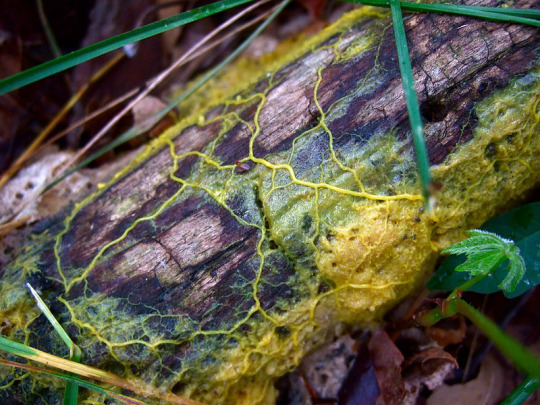
Probably the coolest slime mold is Physarum polycephalum, which has been shown to be capable of reconstructing the layout of the Tokyo rail system--a system so efficient it took human engineers years to design!
But how did a creature without any neurons solve such a complicated problem? Why, quite simple! It made a brain out of tubes.
102 notes
·
View notes
Photo

Euglena (Euglena spp.)
Family: Euglenoid Family (Euglenaceae)
IUCN Conservation Status: Unassessed
The members of the genus Euglena are microscopic, single-celled eukaryotes that can be found in large numbers in both marine and freshwater habitats worldwide. Exactly what they are, taxonomically speaking, has been the subject of extensive debate: like plants, their bodies contain chloroplasts filled with large amounts of the green pigment chlorophyll which allows them to absorb sunlight and carry out photosynthesis to sustain themselves, but like animals, they are capable of “eating” (when faced with low light levels that impair their ability to carry out photosynthesis they can secrete enzymes that break down dead organic matter in the water around them, allowing them to absorb nutrients from this matter through their cell membranes), moving (with a pair of tiny tail-like structures, known as flagella, allowing them to swim towards food and away from predators such as larger single-celled organisms and tiny animals such as rotifers and fish larvae) and rudimentary “seeing” (with a single redish-orange “eye spot” filtering sunlight onto a light-sensitive structure at the base of the flagella and thereby forming something comparable to a very basic eye, allowing Euglena species to distinguish between light and dark and move towards sunlight.) As such, most authorities now classify Euglena and its relatives as protists, a sort of “miscellaneous” category that includes all eukaryotic organisms that are not animals, plants or fungi. When faced with dry conditions or a lack of sunlight and food, Euglena species can encase themselves in a protective membrane and enter a dormant state until they encounter preferable conditions, and when conditions are ideal they reproduce through binary fission, a form of asexual reproduction in which a single-celled organism essentially makes a copy of its genetic material, separates these two copies at opposite ends of its body and then splits into two distinct but genetically identical individuals. When sunlight is intense and water is abundant, these organisms may reproduce so frequently that the water they live in begins to appear green (or, in the case of the species Euglena sanguinea which uniquely possesses a protective casing of the reddish substance astaxanthin around its chloroplasts to protect them from damage from intense UV radiation, red.)
(Note - on the individual pictured above, the orange mark near the top of the image is the eye spot. The flagella are tiny and transparent so are very hard to see through most microscopes, but they’re there - I promise!)
--------------------------------------------------------------------------
Not an animal per say, but a poster I was given for Christmas had these little goopy guys on it and I wanted to learn more about them. I think they’re cool, and while they’re not easily visible protists are still wildlife!
Image Source: https://www.inaturalist.org/taxa/203631-Euglena
#Euglena#protist#protists#euglenoids#protistology#biology#wildlife#aquatic wildlife#marine wildlife#marine biology#NOT zoology this time#microscopic life#microscopic wildlife#single-celled organisms#I swear they're cool they're NOT boring they're cool guys come on
69 notes
·
View notes
Text

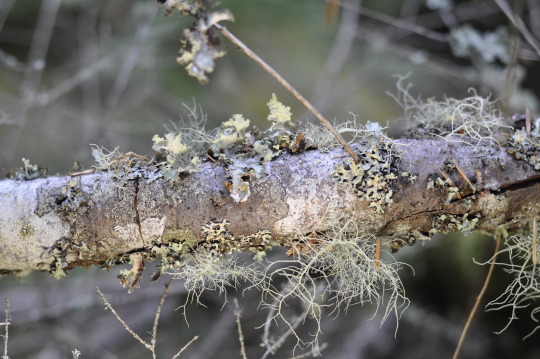
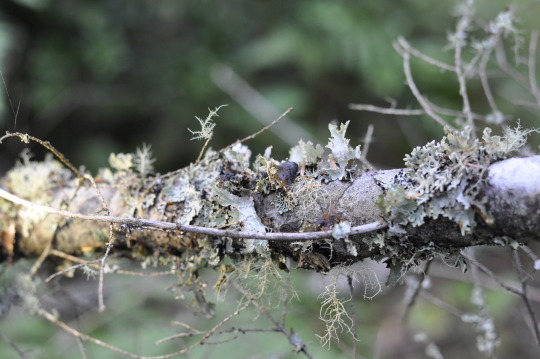
Lichens are a symbiotic entity. Both fungi and algae. They come in many shapes; from leafy to whispy. Some may be mistaken for moss. You can find them on tree bark and branches, both living and dead. Their very existence is a marvel, not to mention the complex shapes they form.
5 notes
·
View notes
Text

#physarum polycephalum#physarum#slime mold#protist#amoeba#physaraceae#physarales#october#mspaint#myxogastria
3 notes
·
View notes
Text



Wolf's milk slime mold, it was all over the place after the rain
2 notes
·
View notes
Text


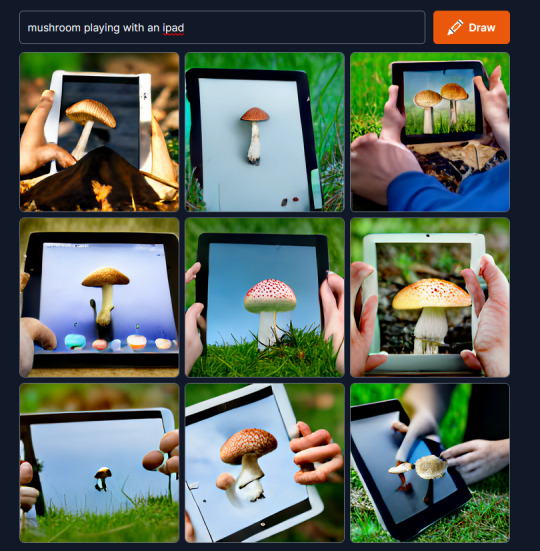








life and death and love on earth. do you understand?
tage erlinger via twitter // happy protozoan via craiyon // mushroom playing with an ipad via craiyon // mushrooms playing together via craiyon // protozoans having fun via craiyon // our beautiful life when it's filled with shrieks by christopher citro // 5 star crest (4 vattenrum) by bladee // crest album cover by bladee // protozoans I by oomycete2003 // tokophrya by oomycete2003 // protozoans II by oomycete2003
#euker art#image collection#moodboard#biology#protozoa#protozoan#protist#drain gang#bladee#crest#mushrooms#fungi#an utterly incomprehensible collection of images and texts#for the eyes of the enlightened only#life and death and love on earth. do you understand?
10 notes
·
View notes
Text
domain winner was BACTERIA!!
#(protists are algae and monera are single-cell organisms)#polls#poll#living creature poll#honestly the results of the kingdom poll are probably gonna be void depending on what happens#animal#plant#fungi#protist#monera
1 note
·
View note
Text
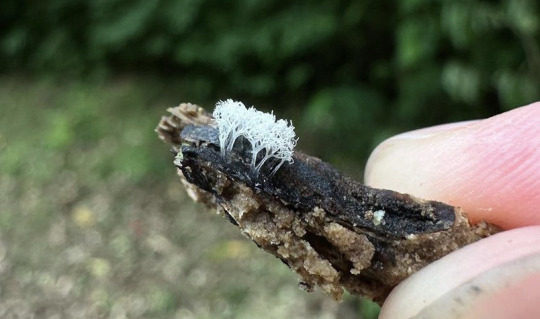

Ceratiomyxa fruticulosa var. arbuscula by Eric Cho
‘arbuscula’ means shrub-like !
#ceratiomyxa#ceratiomyxa fruticulosa#ceratiomyxa fruticulosa var. arbuscula#eric cho#myxomycota#slime mold#slime mould#myxomycetes#macro#macro photography#microbiota#microorganisms#microbiology#nature photography#forestcore#forest photography#protists#eukaryotes#fungi#mycology
2K notes
·
View notes
Text




2024-04-13
Incredibly stressful week. Just test upon test, deadline upon deadline. School and my extracurriculars have ramped up, and my to-do list seems suffocating at times.
But hey: at least I have good tea and a great eye for finding amoebas.
#is anyone interested in seeing a video of my amoeba#I managed to catch it on camera through the eyepiece#it’s so cute!#just a silly little guy#love protists#also do not be alarmed if at one point I start talking about breast cancer#doing my first research project and it’s pretty freaking cool!#studyblr#studyspo#dark academia#study aesthetic#aesthetic#student#my posts#chaotic academia#study#stemblr#stem academia#microscopy
82 notes
·
View notes
Text

Meteora sporadica
New high-level eukaryote branch discovered in your local sea basin!
1 note
·
View note
Text

Diophrys appendiculata. A single-celled marine organism covered in hair-like structures. Fauna of Chilka Lake. 1995.
Internet Archive
85 notes
·
View notes
Text

Smothered, Pasted, Powdered
Jacquard weaving, chalk pigments, acrylic primer, clear gesso, used screenprinting frame
56 notes
·
View notes
Text

Pardon the over-exposure. This might be a fungi. Might be a lichen. In either case, its vibrant yellow hue was stunning to spy during my crawl through the thicket..
5 notes
·
View notes